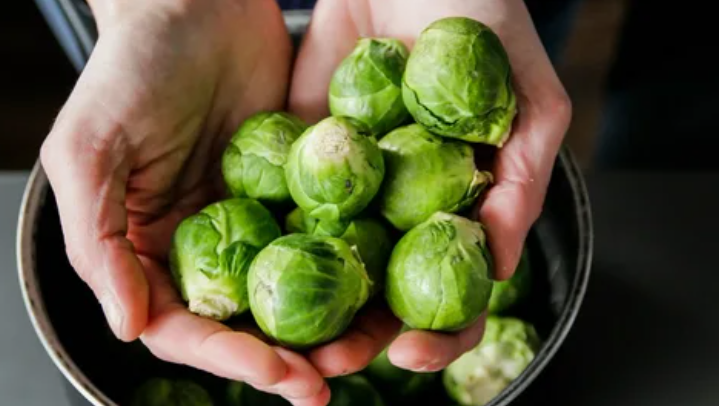Why Are My Brussel Sprouts Not Forming Heads?

Brussel sprouts may have an unfortunate reputation among children, but they can be one of the most exciting, hardy, and delicious vegetables to grow in your garden. But when plants don’t produce classic sprouts that we all recognize? What should this mean for their future development?
Reasons Brussel sprouts don’t form heads include nitrogen deficiencies in the soil, too warm of an environment and needing extra fertilization from other sources – any combination of which will likely leave you with minimal or no Brussel sprouts to harvest.
Why are my brussel sprouts not forming heads? There are ways you can combat these challenges and ensure a bumper harvest this season. Continue reading for more details about Brussel sprout growth and which varieties produce heads quickly.
How long do Brussel Sprouts take to form?
In general, it can take anywhere between 4 months and 120 days after planting for them to fully mature into harvestable specimens; though you may see them beginning to form as soon as 50 days post-sowing!
Patience is key when harvesting brussel sprouts successfully; their formation often takes some time and may leave you questioning whether they will even come. But rest assured, most likely they will!
Golf-ball-sized Brussel sprouts may be the most desired and sought-after size, but sprouts can be harvested in any size you prefer – from smaller bite-size sprouts to golf ball sized sprouts! All varieties taste delicious!
Reasons for Loose Heads in Brussel Sprouts
Why are my brussel sprouts not forming heads? There are three primary causes for loose-headed or non-forming Brussel sprouts; lacking nitrogen in the soil, excessive temperatures outside or plants needing topping due to too many leaves growing out of them.
Lack of nitrogen
One reason that sprouts don’t form on plants may be the soil lacking sufficient nitrogen, an essential macronutrient essential to plant life’s development as an integral component in protein synthesis. Without nitrogen present in soil conditions, sprouting may never occur on its own.
Certain cover crops have the ability to remove nitrogen from the air and return it back into soil via nitrogen fixation, creating an eco-friendly method. Unfortunately, however, this takes an entire season for your soil’s nitrogen levels to return to optimal levels.
Feather meal, blood meal and even just layer of compost can be great additions to increase nitrogen levels in soil. A general 10-10-10 fertilizer might also do the trick! But for maximum accuracy when it comes to measuring nitrogen levels in your soil, consider scheduling a professional soil test at an agricultural extension agency near you – that should give you all of the answers!
Weather too warm
Weather Too Warm Brussels sprouts belong to the brassica family, along with crops like broccoli, cauliflower, kale and collards. Brassica crops tend to be cold hardy but less so in hot climates.
Brussel sprouts can be particularly sensitive to high heat temperatures and won’t form heads if temperatures reach too high, making summer an unfavorable season for their cultivation. Consistently hot weather could send them spiraling out of control or cause them to bolt and go to seed prematurely.
Once a Brussel sprout plant has bolted, its energy no longer goes towards growing bigger sprouts; rather, all of it goes toward seed production before eventually dying off completely. Pruning any flowers off can slow this process but won’t stop it entirely.
To avoid this situation, plant your sprouts early or late summer depending on when you want a harvest. As brussel sprouts are extremely cold hardy plants, don’t be alarmed that some cold nights might kill your plants!
My garden had some striking signs after our initial freeze; in particular, its top leaves of Brussel sprout plants became severely damaged and began drooping over their stems, becoming brown and discolored.
But this ended up creating a sort of protective tent around the brussel sprouts themselves which were in no way damaged by the low temperatures. I left them on the plant for approximately another two weeks before harvesting them.
Many experts consider frost to be essential in producing delicious brussel sprouts; this causes their starches to be turned into sugars in order to survive cold temperatures, creating sweeter sprouts than would have existed without frost.
Sometimes, Brussel sprouts can even survive an entire winter season! Covering them with something such as frost cloth can help ensure their warmth, but even without one they might still be going strong come springtime!

Plants need to be topped
Plants require pruning In order to encourage more of its energy to go towards sprout production, you can cut off some of the top leaves of the plant. Beginning at where large leaves have grown out from underneath it all, cut several at a time from its base until you reach its topmost leaf buds and gradually work your way upward.
Make sure not to remove every leaf, as your plant still relies on them for photosynthesis. My advice would be not to prune too aggressively – you can always return later and cut more off; once removed they cannot be put back.
Certain varieties of Brussel sprouts require topping to produce sprouts, so read your seed packet carefully to make sure that you’re growing a variety which requires this action.
Best Brussel sprout varieties for tighter heads
Churchill
Churchill is one of the fastest-growing Brussel sprout varieties for tighter heads. Mature fruit typically takes 85 days and can be kept stored up to six weeks post harvesting.
Churchill sprouts are known for their high yields, making them ideal for preservation through freezing or canning.
Dagan
Dagan sprouts mature after approximately 100 days. Their tight heads make them suitable for holding in the field.
This variety is highly reliable and resistant to disease, with even less likelihood of lodging – which occurs when top-heavy plants become too top heavy and begin to tip over.
As mentioned previously, topping your plants can also help prevent lodging among your Brussel sprouts by relieving some of their upper weight.
Hesita
This variety takes approximately 100 days to reach maturity, and is prized for its sweet flavor as well as tight and compact sprout heads.
These shorter stalks tend to be disease resistant and more resistant than other popular varieties, making these sprouts perfect for gardeners looking for disease resistance in Brussel sprouts varieties.
Red Ball
Red Ball These vibrant red brussel sprouts are truly special, featuring deep crimson sprouts that deepen when exposed to colder temperatures. While harvesting takes 30 weeks from sowing, this variety’s long cropping period makes it worth your while for Christmas celebrations! Your patience will surely be rewarded.
Takeaway
Why are my brussel sprouts not forming heads? Frustration can arise when harvesting Brussel sprouts doesn’t go as expected, which I know first-hand. To guarantee big and beautiful sprouts this season, ensure your soil contains enough nitrogen, the weather doesn’t become too warm, and that you regularly water and top your plants.
Ciara Konhaus

I’m Ciara and I’m a gardener and agricultural educator in zone 6b. I’ve farmed and gardened all over the Appalachian mountains and love to empower people with the tools they need to start their own gardens.
